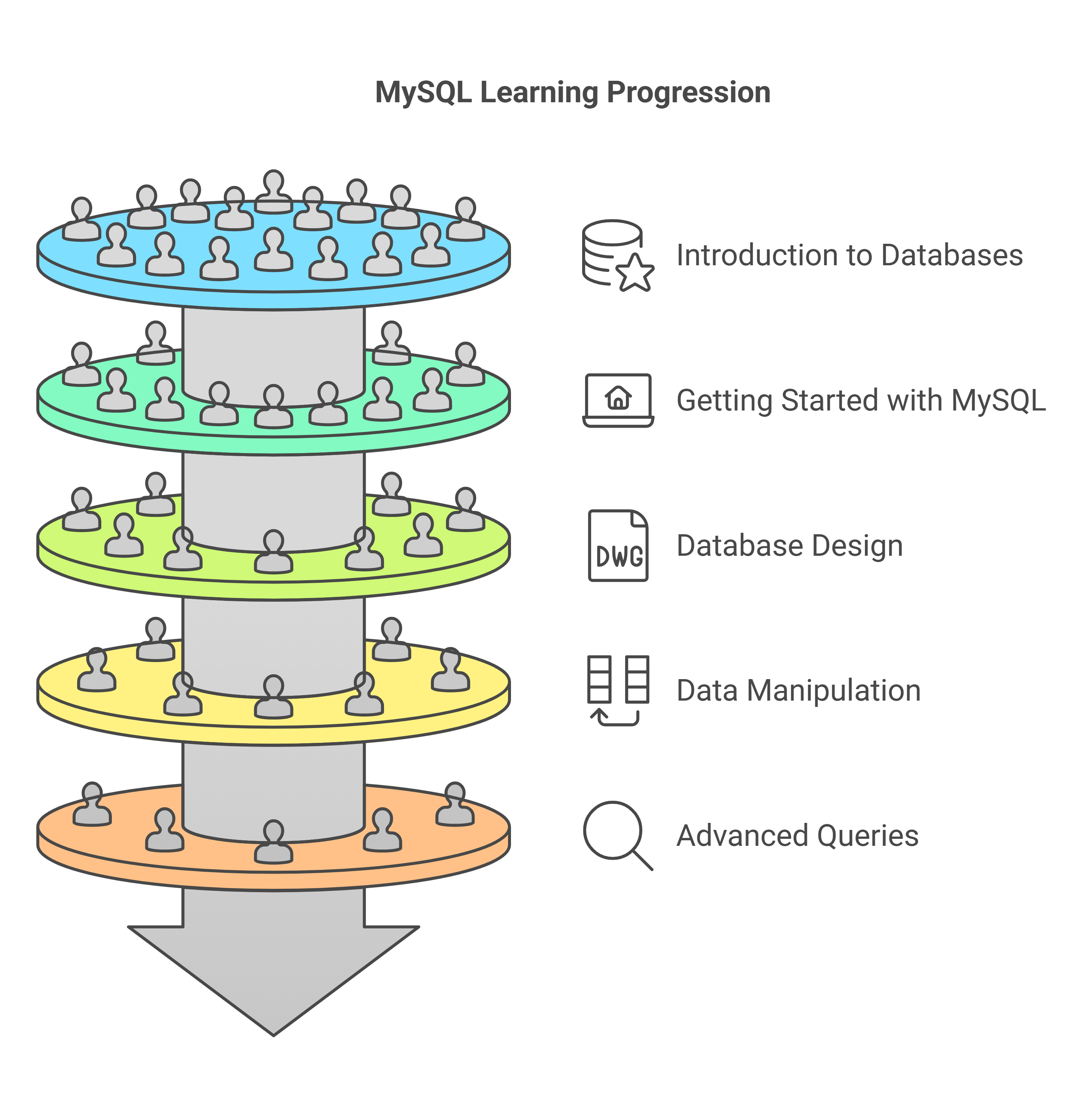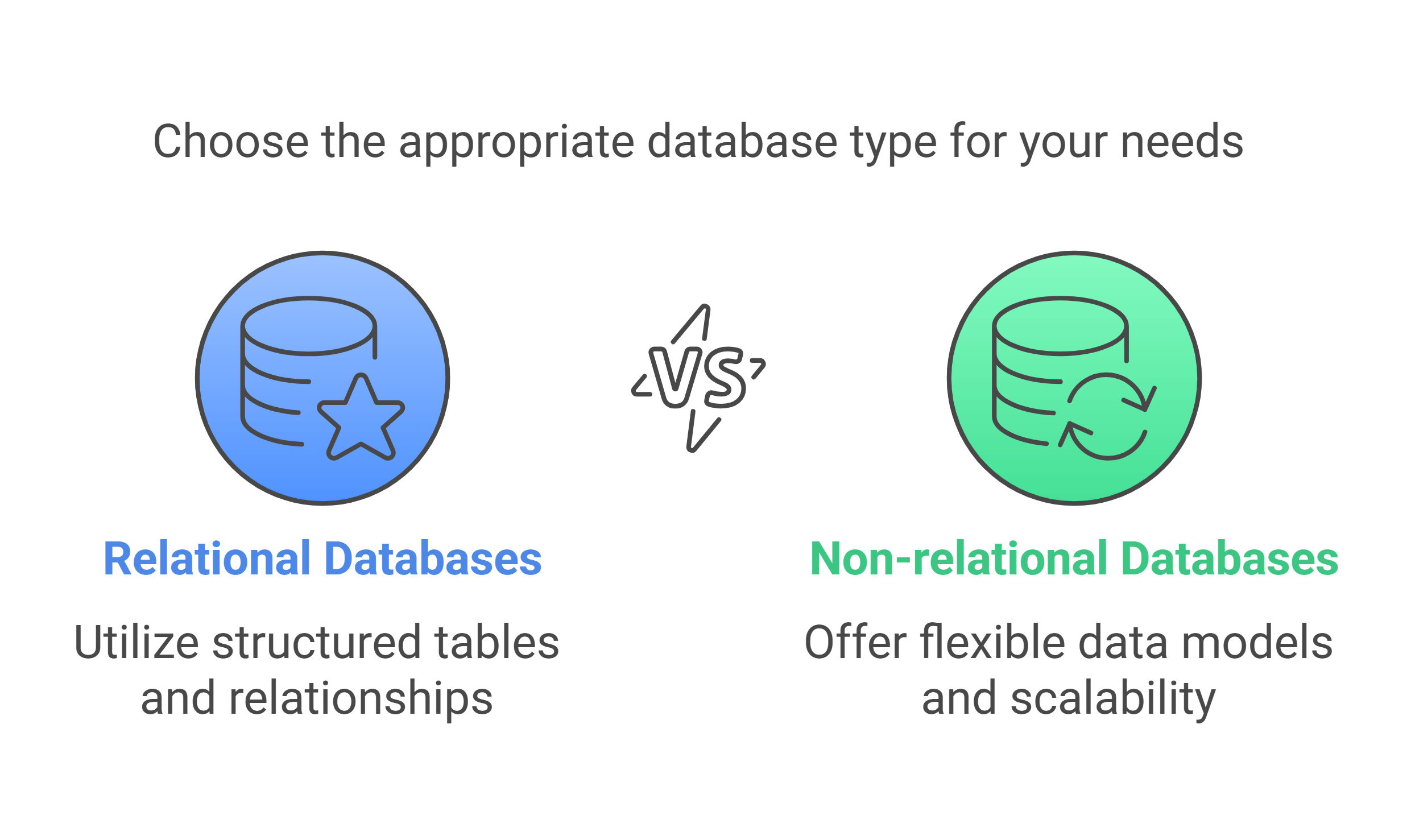Welcome to the MySQL Tutorial
Select a topic from the sidebar to start learning.
Roadmap to Learn MySQL

Importance of MySQL
MySQL is an open-source relational database management system (RDBMS).
It is widely used for web applications, data analytics, and enterprise solutions.
MySQL supports ACID compliance, ensuring data integrity and reliability.
It is highly scalable, making it suitable for small businesses and large enterprises.
Relational vs Non-Relational Databases

| Feature | Relational Databases | Non-Relational Databases |
|---|---|---|
| Data Structure | Uses structured tables with predefined schemas | Uses flexible, schema-less models like JSON, key-value, or documents |
| Scalability | Vertically scalable (adding more resources to a single server) | Horizontally scalable (distributing data across multiple servers) |
| Best for | Complex transactions and structured data (e.g., banking, ERP systems) | Big data, unstructured data, and real-time applications (e.g., social media, IoT) |
| Query Language | SQL (Structured Query Language) | Varies (MongoDB uses JSON-like queries, Cassandra uses CQL, etc.) |
| Examples | MySQL, PostgreSQL, Oracle, SQL Server | MongoDB, Cassandra, DynamoDB, Firebase |
Myths and Facts about MySQL
Myth 1: MySQL is not secure.
Fact: MySQL offers strong security features, including encryption, access control, and authentication.
Myth 2: MySQL cannot handle large-scale applications.
Fact: Many high-traffic websites like Facebook and YouTube use MySQL due to its scalability and performance.
Myth 3: MySQL is only for simple applications.
Fact: MySQL is used in various industries, from banking to e-commerce, for handling complex queries and transactions.
Frequently Asked Questions (FAQs)
Q1: What is MySQL used for?
A: MySQL is used for storing, managing, and retrieving data in web applications, business analytics, and cloud computing.
Q2: What is the difference between MySQL and SQL?
A: SQL (Structured Query Language) is a language for managing databases, while MySQL is a database management system that uses SQL.
Q3: Is MySQL free to use?
A: Yes, MySQL has an open-source version, but enterprise editions with advanced features are paid.
Q4: Can MySQL handle big data?
A: Yes, MySQL can be integrated with big data solutions like Hadoop for large-scale data processing.
MySQL Learning Topics
| Topic | Description |
|---|---|
| Introduction to MySQL | Overview of MySQL, its features, and why it is widely used. |
| Installation and Setup | How to install MySQL on Windows, macOS, and Linux. |
| Database & Tables | Creating databases and tables using SQL commands. |
| Data Types | Understanding different MySQL data types like INT, VARCHAR, DATE, etc. |
| Basic SQL Queries | Executing SELECT, INSERT, UPDATE, and DELETE queries. |
| Constraints | Primary Key, Foreign Key, UNIQUE, NOT NULL, CHECK constraints. |
| Joins | INNER JOIN, LEFT JOIN, RIGHT JOIN, and FULL JOIN in MySQL. |
| Indexes | How indexing improves query performance. |
| Stored Procedures | Writing and executing stored procedures for reusability. |
| Triggers | Automating actions with triggers before or after database changes. |
| Transactions | Ensuring ACID compliance using COMMIT and ROLLBACK. |
| Normalization | Organizing data efficiently using Normal Forms (1NF, 2NF, 3NF, etc.). |
| Backup & Restore | Backing up databases and restoring them when needed. |
| Security | Managing user privileges, authentication, and encryption. |